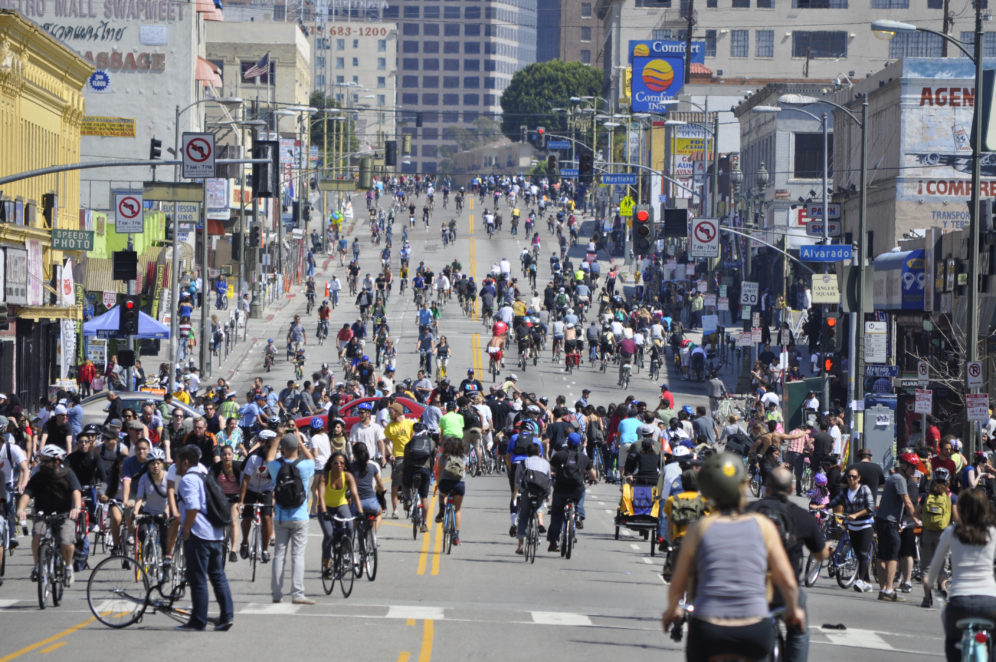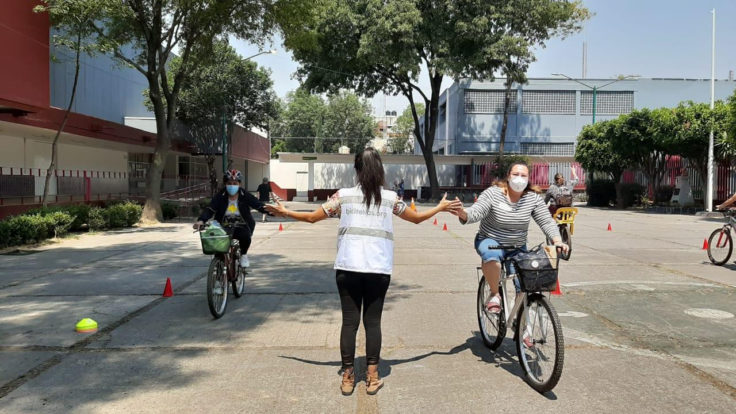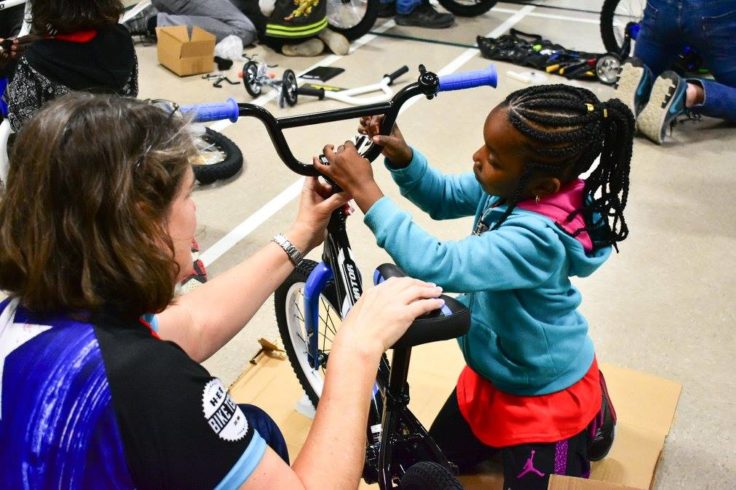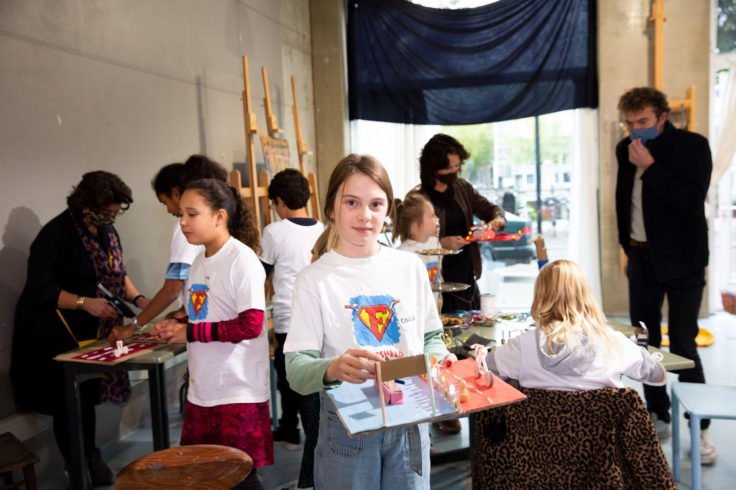 Open street events like CicLAvia in Los Angeles serve to promote active mobility, while reinforcing social cohesion, creating public joy, and allowing people to imagine alternatives to a car centric environment. Photo by CicLAvia.
Open street events like CicLAvia in Los Angeles serve to promote active mobility, while reinforcing social cohesion, creating public joy, and allowing people to imagine alternatives to a car centric environment. Photo by CicLAvia.
March 02, 2022
Strengthening the Human Infrastructure of Cycling
This post was authored by Lucas Snaije, Research & Advocacy Manager at BYCS.
As cities worldwide embrace cycling as an increasingly important part of their transport strategies, urban policies to encourage it are still predominantly focused on urban planning and design measures, in line with the mantra “build it, and they will come”. If we are to successfully combat the many challenges caused by car dominance in cities, a dramatic shift in mobility cultures is essential. To achieve such a shift, we need to think about strengthening the human infrastructure of cycling and transforming our streets’ physical infrastructure.
A recent report on the human infrastructure of cycling published by BYCS explores this burgeoning concept, which asserts that initiatives to change behavior and broaden awareness of cycling are valuable tools to encourage more (and more diverse) people to cycle.
Human infrastructure is a relatively new concept when applied to cycling. It suggests looking beyond the built environment to pay closer attention to the social attitudes and knowledge networks that influence people’s choices about how they get around.
We cannot achieve genuinely inclusive cycling cities if we ignore how the attitudes and cultural values transmitted to us at an early age shape our understanding of the world and how these socio-cultural elements, in turn, shape our mobility behaviors and cultures. There are barriers to cycling that infrastructure does not solve, such as perceptions, access, ability, or awareness. Even with the best-protected bike lane outside their door, if a person doesn’t know how to ride a bicycle, can’t afford one, or doesn’t perceive cycling as a mode of transportation that is for them, they aren’t going to use it. Failure to account for such barriers will continue to exclude those who would benefit the most from cycling.
Leadership and Initiation from the Grassroots
The human infrastructure framework is conducive as we build on the momentum of the current cycling boom. In our research, we found dozens of initiatives worldwide, from open streets, awareness campaigns, cycle buses, and school streets to earn-a-bike programs, cycle training, and e-bike subsidy programs. These programs are widespread; however, they are rarely given the long-term support they deserve by governments. Such initiatives are considered secondary priorities, temporary interventions, or “nice to haves.” They are often initiated and led by civil society stakeholders or local NGOs, operate on razor-thin budgets, and lack the necessary resources to scale beyond initial pilots.

These programs reveal the potential of “soft” initiatives to accompany bicycle infrastructure and offer transferable insights and good practices for cities and organizations to adopt.
- In South Africa, Open Streets Cape Town has mobilized tens of thousands of inhabitants, encouraging cycling and walking in a safer environment and additionally creating a space for people to experience the city differently, breaking down social fragmentation, and providing opportunities for community engagement and awareness around sustainable transport.
- In India, the Power to Pedal campaign, led by Greenpeace, has distributed hundreds of bicycles to women laborers from Delhi’s Zamrudpur community and Bangalore’s Munnade and Laggere garment labor unions, supplemented with cycle training. This has improved their mobility, independence, and access to the city while responding to transport inequality, exacerbated by gender and class.
- In Mexico, The Bicitekas advocacy group has carried out cycle education and awareness courses for mothers in Mexico City’s northern district of Miguel Hidalgo, leveraging safe cycling skills as a way for mothers to navigate household serving journeys in an affordable, independent, and reliable manner, while also strengthening community bonds.
- In Switzerland, The Bike4Car e-bike trial, where thousands of regular drivers are allowed to trade their vehicle for an-e-bike for a period of two weeks, has provided strong evidence that exchanging one’s car keys for an e-bike for just a few weeks influences long-term habitual associations with car usage and that this change persists even a year after the end of an intervention.
- In the USA, Earn-a-Bike programs are extensive and each year equip youth with life skills, physical health, mentoring, and asset-building experiences. Thousands of bikes have been distributed to families in need, with several studies finding that cycling education programs that result in the child earning a bike are associated with significant increases in time spent cycling.
These are just a few initiatives among many that support the human infrastructure of cycling, not only by increasing uptake but by reducing transport poverty and inequality and promoting community cohesion, public joy, and healthier lifestyles.

Cities Taking Action
Even countries with quality cycle lanes and many people cycling, such as the Netherlands, continuously promote cycling through various programs, training, and subsidies, contributing to the maintenance of a cycling society. Despite having world-class cycling infrastructure, the Arnhem-Nijmegen urban region continues to strengthen the human infrastructure of cycling, focusing on addressing a stagnating cycle mode share among vulnerable populations. One such response to this issue is the Bicycle Heroes program, a campaign that challenges 8-12-year-old children to think about the bicycle as a means of transport and develop creative solutions to address problems they encounter while cycling. Its intentions are to enable more children to cycle safely and independently while integrating their perspective in urban planning and policy.

Greater attention to cycling cultures is also growing in cities outside Europe. The city of Oakland, for example, has recognized in its latest cycling master plan, “Let’s Bike Oakland,” that funding bicycle programs is equally as crucial as funding bicycle infrastructure to achieve safety and equity goals. The city has started working with local community partners and is developing programs such as education courses for youth, e-bike libraries, and bicycle resources such as locks, tire pumps, and tools at public libraries in every neighborhood. There are also numerous indications that cycling cultures are gaining interest around the world, from Buenos Aires to Addis Ababa or Bengaluru, and these are encouraging signs that cities are both recognizing the value of behavior change programs, as well as the role that communities have to play in shaping local cycling cultures.
The Tandem of Human and Built Infrastructure
It is essential to underline that human infrastructure programs implemented in isolation will only have limited success. Perceived safety remains the most significant barrier to cycling around the world. If cities do not commit to the rapid provision of protected cycle lanes and the slowing of vehicles, the uptake of everyday cycling will only be marginal. However, there are several steps that cities can take to pay closer attention to the human infrastructure of cycling, and if done correctly in conjunction with physical interventions, it can generate new demands for cycling, and ultimately increase the use of cycle lanes.
Our report puts forward six recommendations with 35 detailed action points. They focus on:
- reducing skill and cost barriers
- developing awareness campaigns and storytelling with a focus on diversity
- engaging with communities in a meaningful manner
- connecting cycling to urban wellbeing, and
- growing the role of social research and knowledge sharing in developing good practices in this field.
If hard and soft measures can be better coordinated as a holistic strategy and the importance of cycling cultures and human infrastructure is further recognized, the achievement of cycling cities can be accelerated in a manner that is inclusive of all residents.
About BYCS
We are an Amsterdam-based global NGO guided by the belief that bicycles transform cities and cities transform the world. We envision an urban future where half of city trips will be by bicycle by the decade’s end. To help achieve this, we nurture, strengthen, and scale community-led cycling initiatives globally, striving towards this bold vision that we call 50×30.
